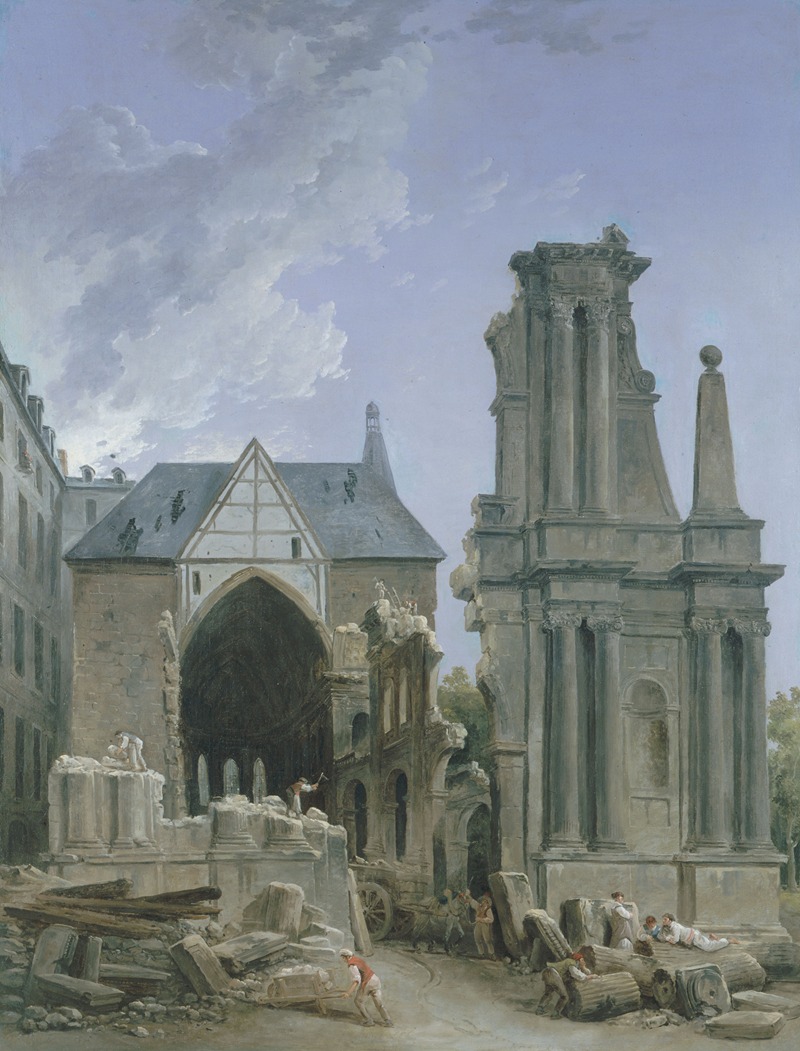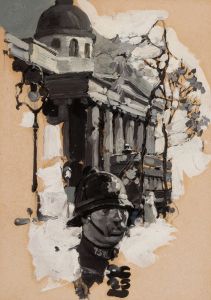
L’Eglise des Feuillants en démolition
A hand-painted replica of Hubert Robert’s masterpiece L’Eglise des Feuillants en démolition, meticulously crafted by professional artists to capture the true essence of the original. Each piece is created with museum-quality canvas and rare mineral pigments, carefully painted by experienced artists with delicate brushstrokes and rich, layered colors to perfectly recreate the texture of the original artwork. Unlike machine-printed reproductions, this hand-painted version brings the painting to life, infused with the artist’s emotions and skill in every stroke. Whether for personal collection or home decoration, it instantly elevates the artistic atmosphere of any space.
L’Eglise des Feuillants en démolition is a painting by the French artist Hubert Robert, known for his depictions of architectural ruins and landscapes. The painting portrays the demolition of the Church of the Feuillants, a religious building located in Paris, France. The Feuillants were a branch of the Cistercian order, and their church was situated near the Tuileries Palace.
The artwork is believed to have been created during or shortly after the French Revolution, a period marked by significant political and social upheaval. During this time, many religious institutions and their properties were confiscated, repurposed, or destroyed as part of the revolutionary government's efforts to secularize the nation. The Church of the Feuillants was among the structures affected by these policies, and its demolition is the subject of Robert's painting.
Hubert Robert, often referred to as "Robert des Ruines" (Robert of the Ruins), was renowned for his ability to capture the grandeur and melancholy of decaying architecture. In this painting, he employs his characteristic style to depict the church in a state of partial destruction, with rubble scattered across the scene. The composition emphasizes the transitory nature of human achievements and the passage of time, themes that were central to Robert's body of work.
The painting is notable for its historical significance, as it documents the physical and symbolic dismantling of religious institutions during the revolutionary era. It also reflects the broader cultural and artistic trends of the late 18th century, which often explored themes of ruin and decay as a means of contemplating the impermanence of human endeavors.
As of now, the exact location of the painting or its current ownership is not widely documented. Hubert Robert's works, however, are held in numerous prestigious collections, including the Louvre Museum in Paris and other major art institutions around the world.
This painting serves as both an artistic achievement and a historical record, offering insight into the turbulent period of the French Revolution and the societal transformations that accompanied it.





![Pyramids of Geezeh [Giza].](/imgs/217529/s/david-roberts-pyramids-of-geezeh-giza-edcbd9cd.jpg)
![Pyramids of Gezeeh [Giza], from the Nile.](/imgs/217530/s/david-roberts-pyramids-of-gezeeh-giza-from-the-nile-56ef7f56.jpg)
![Temple of Kalabshee [Kalabsha, Kalâbishah], Nubia. Nov. 1838.](/imgs/217548/s/david-roberts-temple-of-kalabshee-kalabsha-kalabishah-nubia-nov-1838-be0ac440.jpg)
![Temple of Wady Saboua [Wadi al-Sabua], Nubia.](/imgs/217551/s/david-roberts-temple-of-wady-saboua-wadi-alsabua-nubia-52e62db.jpg)









